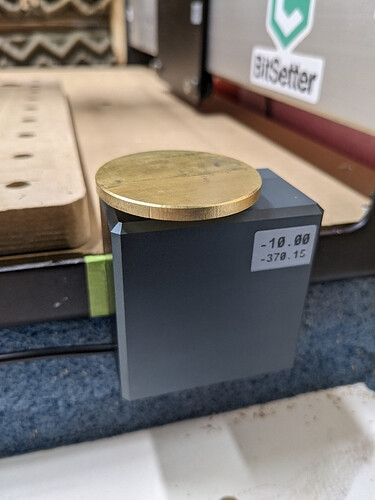Sorry, I somehow missed the “planing bit” part of your post.
If your planing bit has a hole in the middle like many do, you could:
-
mount a large enough disc on top the bitsetter button, such that the three cutters push on that disc, rather than the center of the planing bit. If you have it (the disc) installed there from machine initialization, the extra thickness will not matter, the bitsetter will compensate
EDIT: discussion here about this:
Bitsetter and large diameter bits issue
EDIT: another example using a business card
How to skip bitsetter for waste board surfacing
EDIT: example, from @Sarge013:

-
or temporarily disable the bitsetter: then you are back to manually zeroing in-between tool changes.